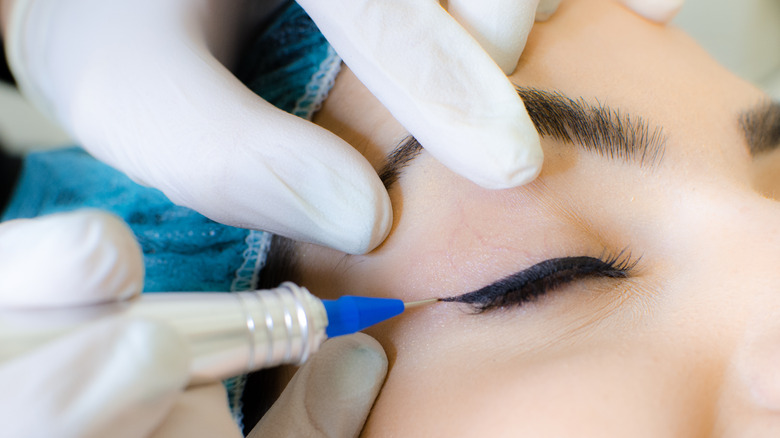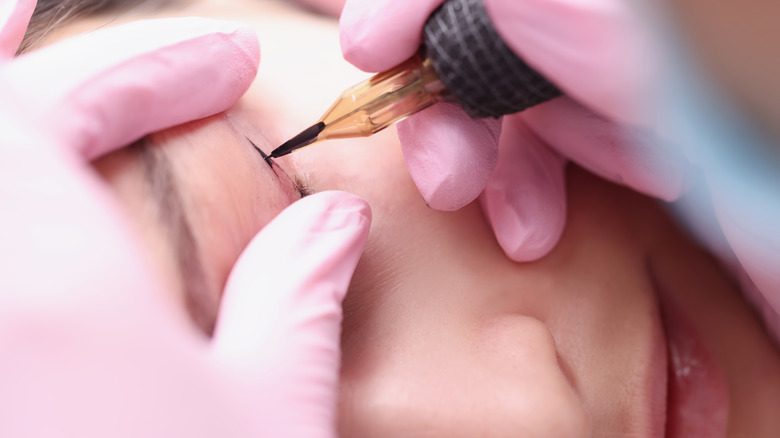Is Tattooing Your Eyelids Dangerous?
Every few years, there seems to be a new tattoo trend popping up in the mainstream that pushes the boundaries of what's considered a typical spot for tattoo placement. Many of us remember the explosion of the ankle tattoo in the 2000s (via Goodbye Tattoos), and who could forget the jaw-dropping — literally — inner lower lip tattoo that was all the rage not that long ago? In recent years, tattoo lovers have found yet another new canvas for their latest ink: the eyelids.
Tattoo artist and blogger Ink Art By Kate states that eyelid tattoos can be split into two separate categories. One can either opt for a traditional tattooed image on the eyelid, or they can undergo an entirely different tattoo treatment for the appearance of permanent eye makeup. The idea of never having to purchase another eyeliner pencil or tube of mascara ever again sounds tempting, but could tattooing such a delicate area of the face potentially be dangerous?
Potential complications from eyelid tattoos
Experts at Medical Bag share that over time, cosmetic tattooing, or micropigmentation, has actually been implemented as a medical treatment for those who have experienced hair loss of the eyebrows such as the elderly or cancer patients. However, unless administered by a knowledgeable tattoo artist or healthcare professional, there is the risk of complications.
A 2014 study examined side effects that developed in middle-aged and older female participants in the aftermath of receiving permanent eye makeup treatment in the eyebrows and eyelids (via Clinical Interventions in Aging). The research revealed instances of infection, swelling, and discoloration in the surrounding skin and corneas. An alternate 2015 study found that out of 40 female participants, 10 of the women had eyelid tattoos and were more susceptible to dry eyes, erosion of the corneas, and at an increased risk for other ocular diseases (via Review of Optometry).
As with any tattoo, precautions should be taken to ensure proper tool sterilization, professional application, and tattoo aftercare. Doing so will reduce the risk for infection and other potential complications.


